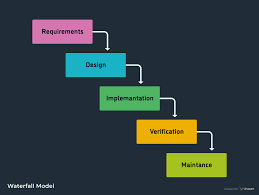During the Systems Development Life Cycle (SDLC), several techniques can be employed to control and direct a project effectively. Here are some commonly used techniques:
- Project Planning and Scheduling: Developing a comprehensive project plan that outlines tasks, milestones, timelines, and dependencies is crucial. Techniques like Work Breakdown Structure (WBS), Gantt charts, and Critical Path Method (CPM) can be utilized to break down the project into manageable components, allocate resources, and establish realistic schedules.
- Project Tracking and Monitoring: Regularly tracking and monitoring project progress against the established plan is essential. Techniques such as progress reports, status meetings, and project management software can be used to monitor task completion, identify bottlenecks, and ensure that the project stays on track.
- Risk Management: Implementing risk management techniques helps identify potential risks and develop strategies to mitigate them. Techniques like risk assessment, risk prioritization, and risk response planning enable proactive risk management throughout the SDLC.
- Change Control: Change control techniques facilitate the management of changes to project scope, requirements, or timelines. Establishing a change control process that includes change requests, impact analysis, and change approval mechanisms helps ensure that project changes are properly evaluated, authorized, and implemented.
- Quality Assurance and Testing: Implementing techniques for quality assurance and testing is crucial to deliver a reliable and functional system. This includes techniques such as test planning, test case development, test execution, and defect tracking to ensure that the system meets the specified requirements and quality standards.
- Configuration Management: Configuration management techniques help manage and control changes to project artifacts and deliverables. This includes maintaining version control, documenting changes, and establishing baselines to ensure that project components are properly managed and tracked.
- Communication and Collaboration: Effective communication and collaboration techniques, such as regular status meetings, project documentation, and collaboration tools, facilitate coordination among team members and stakeholders. Clear and timely communication helps align expectations, resolve issues promptly, and keep all stakeholders informed throughout the SDLC.
- Stakeholder Engagement: Techniques for stakeholder engagement, such as regular progress updates, requirements validation sessions, and feedback mechanisms, ensure active involvement and participation of stakeholders. Engaging stakeholders throughout the SDLC helps to maintain their support, manage expectations, and gather valuable input.
- Project Reviews and Lessons Learned: Conducting periodic project reviews and capturing lessons learned are important techniques for continuous improvement. These activities enable the identification of strengths, weaknesses, and opportunities for improvement, which can be applied to future projects.
By utilizing these techniques, project managers and teams can effectively control and direct projects during the SDLC, ensuring successful outcomes and delivering high-quality systems.
SHARE
